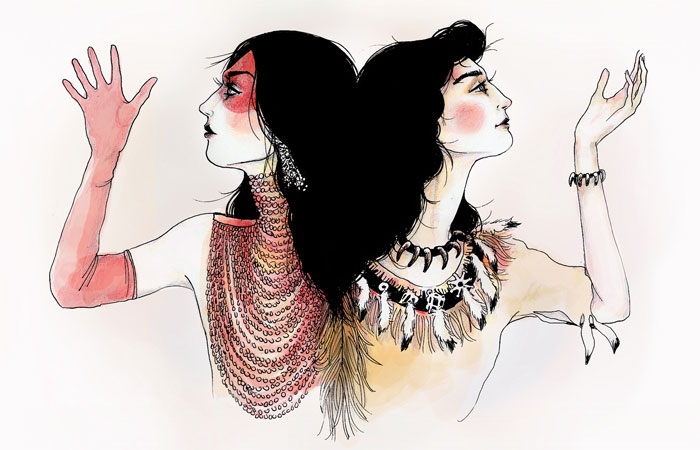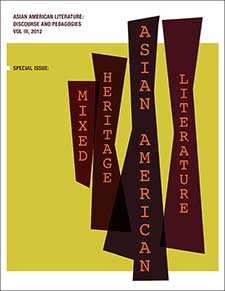“Maneuvers of Silence and the Task of ‘New Negro’ Womanhood”Posted in Articles, Literary/Artistic Criticism, Media Archive, United States, Women on 2012-10-22 05:33Z by Steven |
“Maneuvers of Silence and the Task of ‘New Negro’ Womanhood”
Journal of Narrative Theory
Volume 42, Number 1, Spring 2012
pages 46-68
DOI: 10.1353/jnt.2012.0006
Emily M. Hinnov, Assistant Dean of Curriculum & Lecturer of English
Granite State College, Concord, New Hampshire
Yes, she has arrived. Like her white sister, she is the product of profound and vital changes in our economic mechanism, wrought mainly by the World War and its aftermath. Along the entire gamut of social, economic and political attitudes, the New Negro Woman, with her head erect and spirit undaunted is resolutely marching toward the liberation of her people in particular and the human race in general.
— Editorial, The Messenger’s “New Negro Woman” issue (1923)
But I have no civilized articulation for the things I hate. I proudly love being a Negro woman; [it’s] so involved and interesting. We are the PROBLEM—the great national game of TABOO.— Anne Spencer, qtd. in Countee Cullen’s Caroling Dusk (1927)
Here is a woman who tried to be decisive in extremis. She “spoke,” but women did not, do not, “hear” her. Thus she can be defined as a “subaltern”—a person without lines of social mobility.— Gayatri Chakravorty Spivak, “Can the Subaltern Speak?”
Given the primitivist stereotypes projected upon African American women as oversexed, exotic creatures during the Harlem Renaissance era, contemporaneous poet Anne Spencer’s statement suggests that women writers’ doubly conscious performance of self must have been challenging (to say the least). With her comment about the state of “New Negro Womanhood” in mind, we might ask: to what extent were women writers associated with the Harlem Renaissance successful in critiquing representations of race or gender within the context of that male-dominated literary and cultural movement? Forthright literary depictions of race, gender, and mobility in now canonical Harlem Renaissance works by Nella Larsen and Zora Neale Hurston allow expression of varied facets of the African American woman’s experience during the early part of the twentieth century. Hurston’s women (and Hurston herself) refuse to be “tragically colored” and instead embrace the power inherent in their female sexuality—even using it, in part, remain perpetually mobile. For Larsen, however, the triple bind of double-consciousness, female sexuality, and white supremacy eventually disallows any true mobility for her fictional characters. When Larsen was accused of plagiarism in 1930, there were no legal charges, but her career never recovered from this blow. It seemed that “in America, whites might borrow from blacks with impunity, but Negro use of white materials is always suspect” (Douglas 105). As Ann Douglas writes, “The New Negro was a figure with few claims on mainline America’s attention, interest, or sympathy. If he insulted or displeased, he could be cut off, erased, without thought or regret” (106). It is difficult to determine how much mutuality between black and white artists and audiences could have existed in light of Larsen’s fate. She was “cut off” from what has developed into the African American literary canon essentially because she was a black female artist working within the confines of a racist and sexist culture. Thankfully, Larsen’s rediscovery in the 1980s, and the subsequent inclusion of her work in high school, college, and graduate school classrooms, enabled Larsen’s legacy to resist such erasure. Larsen and Hurston’s work has triumphantly evaded the threat of removal from the literary canon thanks to the gynocritical efforts of many feminist scholars, while other writers of the era still languish on the critical precipice of silence.
In this essay, I am especially interested in the ways in which two still largely ignored Harlem Renaissance women writers, Elise Johnson McDougald, in her more straightforward essay “The Task of Negro Womanhood,” and Marita O. Bonner, in her multigenred, haltingly-titled “On Being Young—a Woman—and Colored,” use silence as a means to maneuver among the various identity positions that comprise the interstices of “New Negro Womanhood.” Placing them within the context of more widely known writers of their era such as Hurston and Larsen is edifying,…


